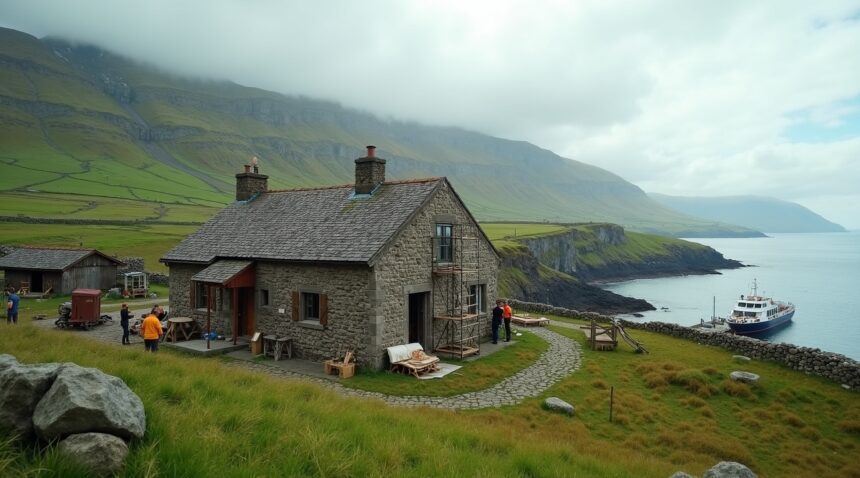Ireland’s Our Living Islands initiative offers a unique opportunity to revitalize remote offshore communities by providing substantial financial support for renovating long-vacant properties.
Overview of the Our Living Islands Initiative
The Irish government is investing in rural development through the Our Living Islands program, aimed at transforming uninhabited buildings on approximately 30 offshore islands into functional homes. Rather than supplying direct cash payments, the program operates through a reimbursement system. Eligible property owners first cover renovation expenses and then apply to recoup up to €84,000 in qualified costs.
Key Eligibility Requirements
- Citizenship Requirement: Applicants must be Irish citizens, EU residents, or non-EU individuals holding valid Irish residency permits.
- Property Ownership: Properties must either be owned by or in the process of being purchased by the applicant.
- Property Condition & Age: Eligible homes must have been built before 1993 and vacant for at least two continuous years.
- Intended Use: Properties must be used as a primary residence or long-term rental housing—not for short-term or vacation use.
How the Grant Works
The maximum available reimbursement is €60,000 for standard vacant homes and €84,000 for derelict properties requiring more extensive work. The process does not include relocation payments or provide funds upfront. Applicants must demonstrate their ability to finance renovations initially without relying solely on program funds.
Application Process Overview
- Submit an application with detailed renovation plans and a comprehensive budget.
- Include proof of ownership or purchase agreement for the vacant island property.
- Demonstrate the financial capacity to complete the renovation independently.
- Await application review, typically lasting 8 to 12 weeks.
Challenges of Island Living
While the grant is generous, island living comes with considerable challenges:
- Healthcare Access: Services are often limited or absent, requiring travel to the mainland for even basic needs.
- Transportation Costs: Regular ferry trips, fuel, and transporting building materials can be significantly more expensive.
- Weather Isolation: Strong winds and storms can leave residents stranded for days with no travel options.
- Limited Amenities: Grocery stores, schools, medical centers, and other facilities may be far away or infrequently available.
Conclusion
The Our Living Islands initiative presents a rare opportunity to bring life and sustainability back to Ireland’s remote communities. By offering significant financial support and incentivizing long-term settlement, the program aims to address depopulation while preserving Ireland’s island heritage.
The Irish Government’s 84,000 Euro Grant for Island Properties Explained
The Our Living Islands initiative represents Ireland’s ambitious 10-year commitment to breathing new life into approximately 30 remote offshore islands. Launched in June 2023, this national policy specifically targets the revitalization of dwindling island populations through strategic financial incentives.
Grant Amounts and Property Eligibility
The program offers substantial renovation funding through the Vacant Property Refurbishment Grant. Properties classified as derelict qualify for grants up to €84,000 (approximately $92,000 USD), while vacant houses in better condition can receive up to €60,000 (~$67,000). These amounts reflect the government’s serious investment in island revitalization efforts.
Many people misunderstand the nature of these funds. The grant isn’t a relocation payment or settlement bonus—it functions as reimbursement for approved renovation costs only. Recipients must first invest their own money in qualifying improvements, then submit documentation for reimbursement up to the grant limit.
Approved Uses and Important Restrictions
The funding covers essential property improvements that transform abandoned structures into livable homes. Approved expenses include:
- Insulation and energy efficiency upgrades
- Structural repairs and foundation work
- Functional system installations (plumbing, electrical, heating)
- Interior decorations and finishing work
- Other pre-approved construction costs
Critical limitations define what the grant won’t cover. Moving expenses, property purchase prices, legal fees, and personal relocation costs fall outside the program’s scope. The initiative focuses exclusively on transforming existing structures rather than supporting the broader costs of island living.
This approach makes financial sense for the government while creating genuine opportunities for those ready to invest in island life. Much like other unique living opportunities such as permanent sea living arrangements, Ireland’s program requires significant personal commitment beyond the initial financial incentive.
The renovation requirement ensures that only serious candidates pursue these opportunities. Properties must meet specific habitability standards once work completes, and recipients typically face residency obligations to maintain grant eligibility. This creates a natural filter that attracts committed individuals rather than opportunistic applicants.
For adventurous spirits considering dramatic lifestyle changes, Ireland’s island program offers a structured path to remote living that’s quite different from popular solo travel destinations or even the appeal of UK coastal retreats. The commitment level required mirrors the isolation and independence that island life demands.
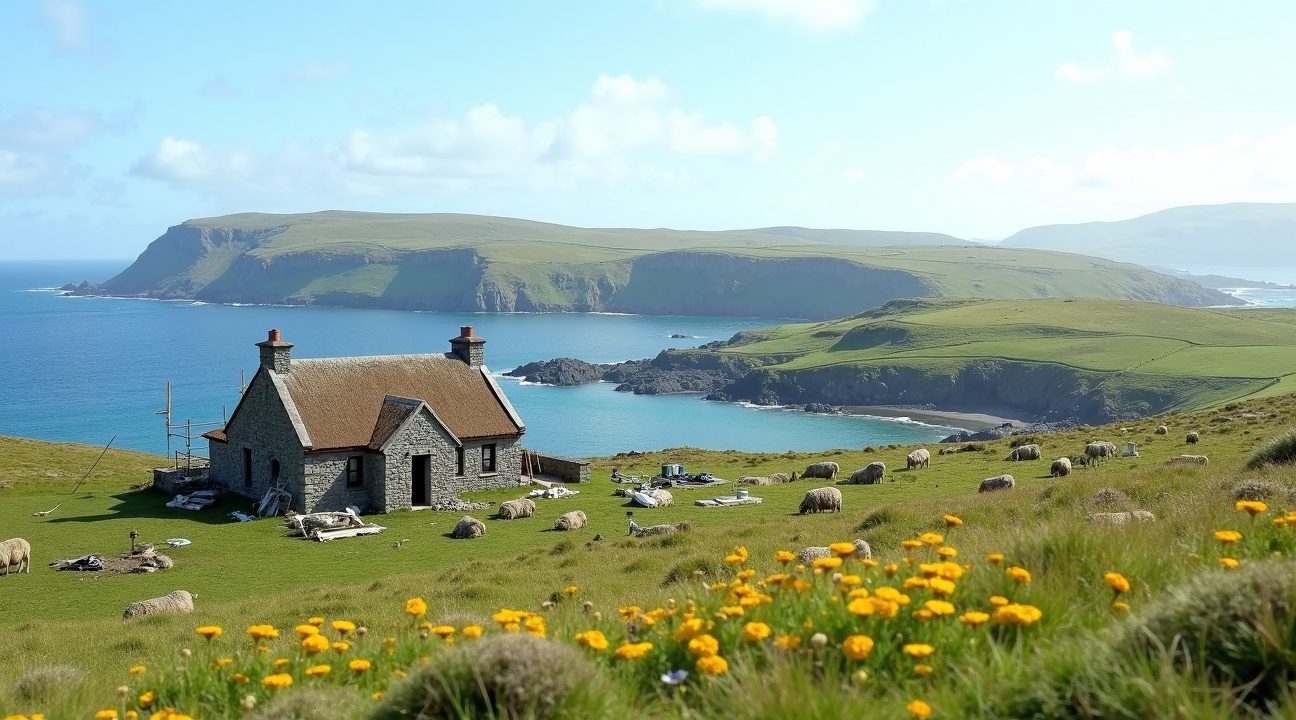
Who Qualifies for Ireland’s Island Renovation Grant
Ireland’s generous island renovation initiative comes with specific eligibility requirements that potential applicants must satisfy before receiving the €84,000 grant. Understanding these criteria ensures interested individuals can properly assess their chances and prepare their applications accordingly.
Legal residency stands as the primary requirement for this program. Irish citizens automatically qualify, as do all European Union citizens who can establish residence in Ireland. Non-EU individuals must possess valid Irish residency permits or work visas that allow them to live in the country legally. This grant doesn’t create new immigration pathways or fast-track citizenship applications, so non-EU applicants must already meet existing Irish immigration rules.
Property and Ownership Requirements
The renovation grant targets specific types of properties that meet strict age and vacancy criteria. Eligible homes must have been constructed before 1993, ensuring the program focuses on older structures that require significant updates. These properties must also have remained vacant for at least two consecutive years, demonstrating genuine need for revitalization.
Ownership requirements add another layer to the qualification process. Applicants must either currently own the property they plan to renovate or be actively engaged in purchasing it. This means prospective recipients can apply while their property purchase is pending, provided they can demonstrate legal commitment to acquire the home.
The intended use of the renovated property plays a crucial role in determining eligibility. Recipients must commit to making the restored home their principal residence, establishing it as their primary dwelling place. Alternatively, they can renovate the property specifically for long-term rental purposes, helping address Ireland’s housing shortage while contributing to island communities.
This dual-purpose approach allows the program to attract both permanent residents who want to embrace island living and property investors willing to provide quality rental housing. Island living offers unique lifestyle opportunities that appeal to various demographics seeking quieter, more connected communities.
The grant program deliberately excludes holiday homes or short-term vacation rentals from consideration. Officials want to ensure renovated properties contribute meaningfully to sustainable island populations rather than serving only seasonal visitors. This requirement helps build stable, year-round communities that can support local businesses and services.
Immigration status verification remains essential throughout the application process. Non-EU citizens cannot use this grant to establish residency rights they don’t already possess. The program requires proof of legal status before approving any funding, ensuring compliance with Irish immigration law while supporting legitimate residents seeking island opportunities.
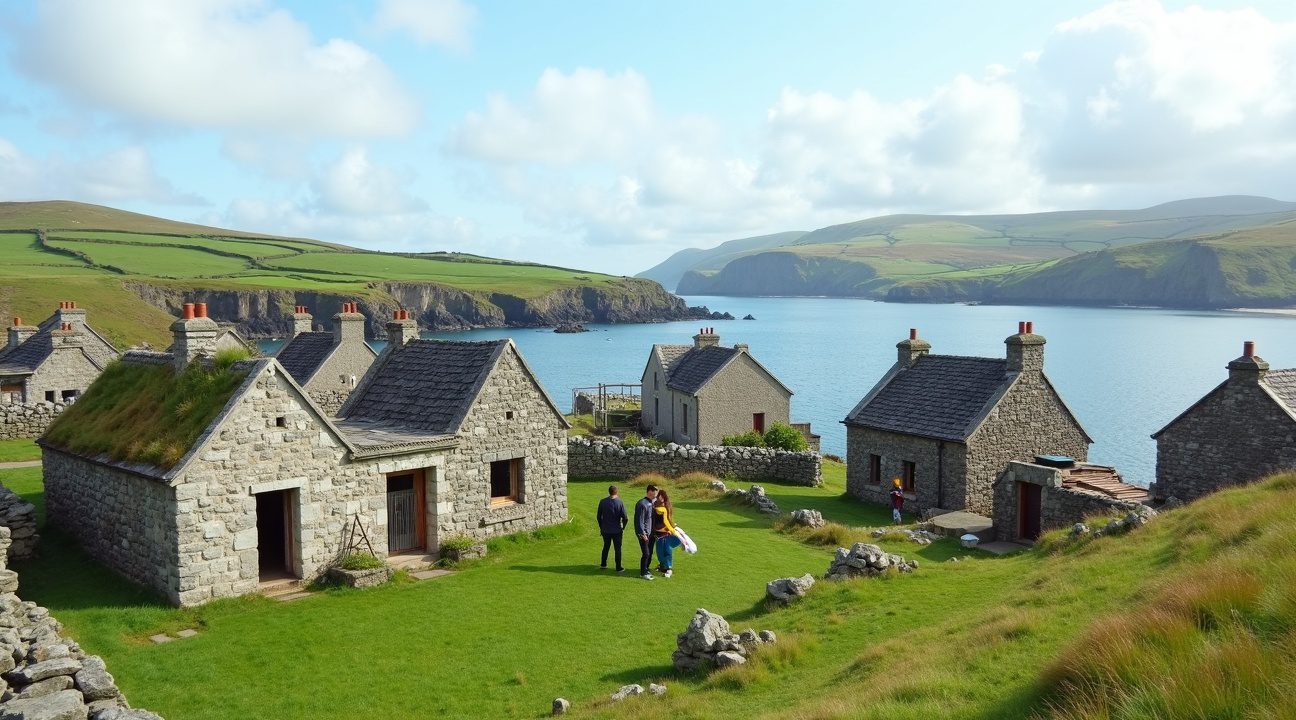
What Life is Really Like on Ireland’s Remote Islands
These eligible islands exist completely separate from the Irish mainland, with no bridges connecting them to the rest of the country. Daily tides often cut off access entirely, making each island a true sanctuary from modern life’s constant connectivity. Arranmore, Clare Island, Bere Island, and Inis Mór represent just a few of the remote locations where newcomers can build fresh starts with government support.
The grant program specifically targets these isolated communities to reverse decades of population decline and foster vibrant, sustainable island living. Irish authorities recognize that without intervention, these unique cultural outposts risk losing their distinct character and centuries-old traditions. Alongside the individual grants, the government has committed €1.9 million for essential infrastructure improvements including pier development, road upgrades, and enhanced community spaces.
Island Living Benefits and Daily Realities
Life on these islands offers remarkable advantages that draw people seeking authentic experiences. The peaceful atmosphere provides a stark contrast to bustling city life, while tight-knit community bonds create support networks rarely found elsewhere. Each island boasts stunning landscapes that change with the seasons, from dramatic cliffs to pristine beaches that rival the best coastal destinations. Traditional Irish culture thrives here, with Gaelic language, music, and customs preserved through daily practice rather than tourist performances.
However, island existence presents significant challenges that potential residents must carefully consider. Healthcare access remains limited, with serious medical situations requiring boat or helicopter transport to mainland facilities. Transportation costs accumulate quickly, as everything from groceries to building materials arrives by ferry. Social isolation can affect some residents, particularly during harsh winter months when ferry services face frequent cancellations. Basic amenities taken for granted elsewhere – from shopping centers to entertainment venues – simply don’t exist on most islands.
The infrastructure investment acknowledges these realities while working to improve daily life for current and future residents. Better piers mean more reliable ferry services, upgraded roads enhance safety and accessibility, and improved community spaces provide gathering places for social connection. Healthcare services receive particular attention, with telemedicine capabilities and upgraded medical facilities planned for several islands.
Weather plays a crucial role in island life, dictating everything from supply deliveries to social activities. Storm seasons can strand residents for days, making self-sufficiency essential. Yet many islanders describe this unpredictability as part of the appeal, forcing them to slow down and appreciate simpler pleasures. Solo travelers often find these communities particularly welcoming, with established residents eager to share local knowledge and traditions.
Some islands now explore innovative solutions like permanent sea-based living concepts, adapting traditional island life for modern needs. These developments suggest Ireland’s island communities continue evolving while maintaining their essential character and charm.
https://www.youtube.com/watch?v=A9BFzdzpoIU
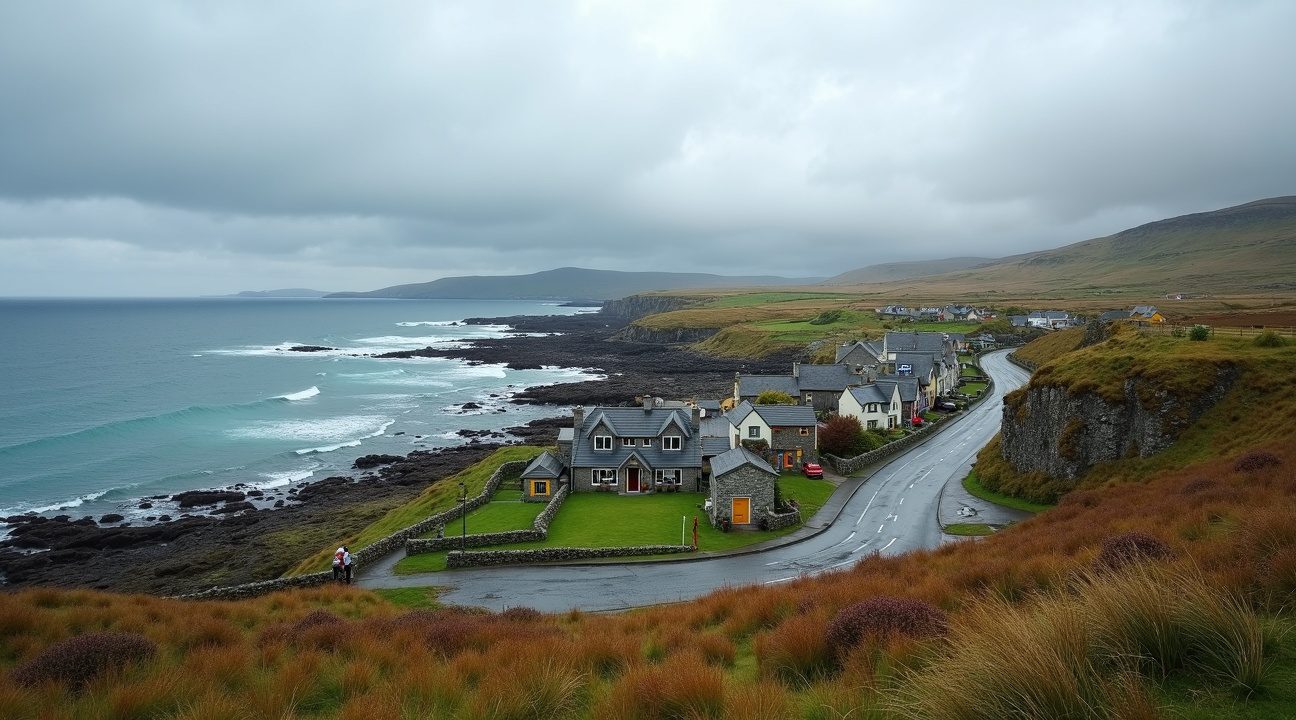
Step-by-Step Application Process for the Island Grant
The application process for Ireland’s €84,000 island renovation grant requires careful preparation and specific documentation. I’ll walk through each stage to help potential applicants understand what’s expected and how to maximize their chances of approval.
Property Acquisition and Eligibility Requirements
The journey begins with finding and securing ownership of a qualifying property on one of the participating Irish islands. Properties must meet strict criteria: they need to have remained vacant for a minimum of two years and must have been constructed before 1993. This requirement ensures the grant targets genuinely derelict buildings that contribute to the preservation of Ireland’s island heritage.
Prospective applicants should focus their property search on the 30 offshore islands currently participating in the scheme. Each island has its own housing stock and availability, so thorough research becomes essential. Once a suitable property is identified, securing legal ownership must happen before any application can proceed. This involves standard property purchase procedures, including surveys, legal checks, and completion of sale documents.
Documentation proving ownership must be comprehensive and recent. I recommend gathering all property deeds, purchase agreements, and any relevant planning permissions that might already exist for the building. The property’s construction date needs verification through official records or professional assessment, as this directly impacts eligibility.
Creating a Detailed Renovation Plan
After securing property ownership, the real work begins with developing a detailed renovation plan. This document serves as the cornerstone of the application and requires careful consideration of both practical and financial elements. The renovation plan must demonstrate how the project will transform the vacant property into a habitable home while respecting local architectural styles and planning regulations.
Budget breakdowns need to be precise and realistic. I suggest obtaining quotes from multiple contractors familiar with island construction challenges, as costs can be significantly higher due to transportation of materials and limited local services. The budget should cover all aspects of renovation including structural work, utilities installation, interior finishing, and any necessary planning fees. Including a 10-15% contingency fund shows financial planning expertise that review committees appreciate.
Timeline projections must account for Ireland’s unpredictable weather patterns and the logistical challenges of island construction. Materials and workers often depend on ferry schedules and weather conditions, which can extend project timelines considerably. Realistic timeframes typically range from 12-18 months for comprehensive renovations, though simpler projects might complete sooner.
Submission and Review Process
The complete application package gets submitted directly to the relevant local island authority responsible for administering the grant program. Each participating island has its own application process and review committee, so requirements may vary slightly between locations. Contact details for island authorities are available through the Irish government’s official channels and local council websites.
Application evaluation focuses heavily on feasibility assessment. Review committees examine whether proposed budgets align with actual renovation requirements and whether applicants demonstrate sufficient financial resources to complete projects even if unexpected costs arise. Living permanently on islands requires significant lifestyle adjustments, and committees often consider applicants’ understanding of this commitment.
Strengthening Your Application
Supporting documentation strengthens applications considerably. Consider including:
- Bank statements demonstrating financial capacity beyond the grant amount
- Professional references
- Evidence of construction or renovation experience
- Remote work evidence, such as proof of employment and internet access
These documents help demonstrate your preparedness and commitment, which are essential to a successful approval.
Decision and Fund Disbursement
The review process typically takes 8-12 weeks from submission to decision. During this period, committees may request additional information or clarification on specific aspects of renovation plans. Maintaining open communication with island authorities and responding promptly to requests helps keep applications moving forward smoothly.
Successful applicants receive grant approval letters outlining specific conditions and payment schedules. Most grants are distributed in stages tied to construction milestones, ensuring proper fund usage and project completion. Regular progress reports and financial documentation are usually required throughout the renovation process.
How Ireland’s Program Compares to Similar International Initiatives
Ireland’s island renovation scheme stands out among global rural revitalization efforts, particularly when measured against Italy’s widely publicized €1 house program. Both initiatives share the same core objective: breathing new life into declining rural communities through strategic population incentives.
Italy’s €1 House Program: Lessons Learned
Italy’s approach gained international attention by offering historic properties for just one euro in towns facing severe depopulation. However, the program encountered significant challenges that Ireland’s initiative deliberately sidesteps. Italian participants often discovered that renovation costs far exceeded initial estimates, with some homeowners facing bills reaching €50,000 to €100,000 for basic habitability improvements.
The Italian scheme’s primary weakness lies in its lack of upfront financial support for renovations. Buyers must commit to restoration work within strict timeframes while funding all improvements independently. This structure has led to numerous abandoned projects and frustrated participants who underestimated the financial commitment required.
Ireland’s Strategic Advantages
Ireland’s program addresses these pitfalls through several key improvements that demonstrate the government’s understanding of previous international failures. The €84,000 grant provides immediate financial backing for renovation work, eliminating the uncertainty that plagued Italy’s initiative.
Key advantages of Ireland’s approach include:
- Substantial upfront funding through grants
- Requirement for pre-approved, detailed refurbishment plans
- Focused assistance to island communities with unique needs
- Integration with long-term rural development strategies
- Transparent financial expectations and support structures
I observe that Ireland’s requirement for detailed refurbishment plans before approval creates a more transparent process. Applicants must present comprehensive renovation strategies, ensuring they understand the scope and costs involved before committing to the project. This preprocessing approach prevents the cost surprises that derailed many Italian renovations.
The Irish program also focuses specifically on islands, creating a more targeted approach than Italy’s broader rural strategy. Island communities face unique challenges including limited infrastructure and transportation access, making the generous financial support more practical and necessary.
Several other countries have launched similar rural revitalization programs with varying degrees of success.
- Portugal offers tax incentives for interior region relocations
- Scotland provides grants for Hebrides island residents
However, none match Ireland’s combination of substantial upfront funding and comprehensive planning requirements.
The timing of Ireland’s launch also provides advantages over earlier programs. Officials have studied the outcomes of Italy’s initiative and similar schemes, incorporating lessons about realistic budgeting and proper planning protocols. This evidence-based approach increases the likelihood of successful community revitalization.
Remote work trends accelerated by recent global events have created more favorable conditions for rural relocation programs. Unlike when Italy launched its €1 houses, many professionals can now maintain urban-level careers while living in remote locations. Ireland’s program capitalizes on this shift by targeting remote living enthusiasts who value isolation and natural beauty.
The Irish initiative’s success metrics also differ from international counterparts. Rather than simply filling empty properties, the program emphasizes sustainable community development and long-term resident retention. This focus on quality over quantity reflects lessons learned from programs that achieved high initial participation but struggled with long-term sustainability.
Ireland’s approach to property selection represents another improvement over similar international efforts. Instead of offering any available property, the program curates suitable buildings that meet specific criteria for renovation potential. This selectivity reduces the risk of participants inheriting properties with structural issues that exceed reasonable renovation budgets.
The program’s integration with existing Irish rural development initiatives creates additional support networks that standalone international programs often lack. Participants benefit from established community services, healthcare access, and transportation links that make island living more practical than completely isolated rural locations featured in other countries’ schemes.
Financial transparency represents perhaps the most significant advantage of Ireland’s model. Unlike programs that obscure true costs behind attractive headlines, Irish officials provide clear information about renovation expectations and available support. This honesty builds trust and attracts serious participants rather than opportunistic bargain hunters who might abandon projects when reality exceeds expectations.
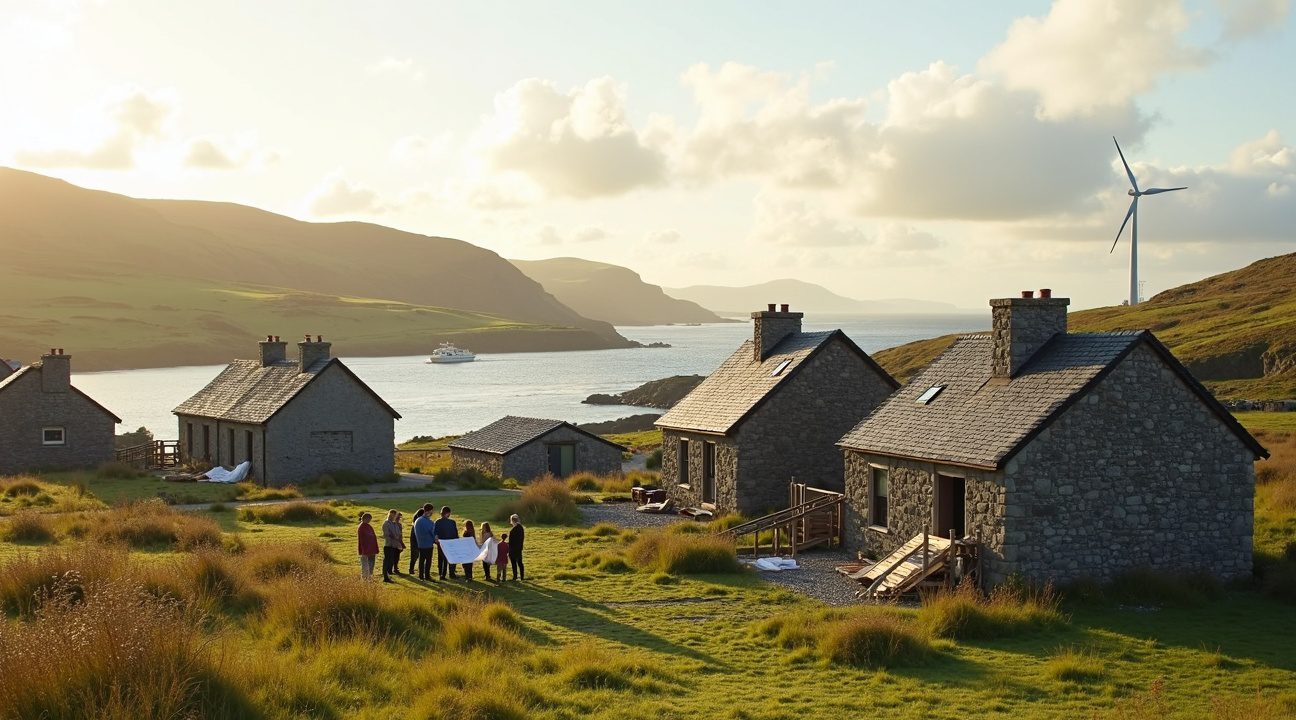
Common Misconceptions and Program Criticisms
Misleading headlines have created significant confusion about Ireland’s island grant program, leading many people to believe they’ll receive cash payments simply for relocating. I’ve noticed how sensationalized reporting often frames these initiatives as “get paid to move” schemes, when the reality differs substantially from these claims.
Understanding What the Grants Actually Cover
The funding operates strictly as renovation grants rather than personal payments. Recipients can’t use these funds for moving expenses, living costs, or personal purchases. Instead, the money must go directly toward home refurbishment projects that meet specific criteria set by local councils. Property owners receive reimbursements only after completing approved renovation work and submitting proper documentation.
Critics point out how these misconceptions may attract people with unrealistic expectations. Someone expecting a cash windfall might find themselves disappointed when they discover the structured nature of the program. The grants function more like construction loans than relocation bonuses, requiring recipients to invest their own resources upfront before receiving any reimbursements.
Long-term Viability Concerns
Several experts question whether these grant programs can achieve lasting population growth without addressing fundamental infrastructure challenges. Remote islands often struggle with:
- Limited internet connectivity
- Restricted transportation options
- Reduced access to healthcare services
Critics argue that offering renovation money addresses symptoms rather than root causes of population decline.
The program’s success hinges on government commitment to sustained investment beyond initial housing improvements. Islands need reliable ferry services, upgraded utilities, and employment opportunities to retain new residents long-term. Without these supporting elements, renovated homes might simply become vacation properties rather than permanent residences.
Some policy analysts worry that focusing primarily on housing renovation overlooks other critical factors that influence relocation decisions. Young families might hesitate to move somewhere without adequate schools, while professionals could struggle with poor internet infrastructure. These challenges require ongoing government attention and funding that extends far beyond home improvement grants.
The effectiveness of similar programs in other countries provides mixed results. While some isolated communities have successfully attracted new residents through financial incentives, others have seen little lasting impact despite significant investment. Ireland’s program faces the additional challenge of competing with numerous global opportunities for remote living.
Another criticism centers on the program’s potential to inflate property values in targeted areas. As renovation grants become available, existing property owners might raise prices, making islands less affordable for people who don’t qualify for grants. This unintended consequence could price out local residents or those seeking to purchase property independently.
The selective nature of grant distribution has also drawn scrutiny. Not all island properties qualify for funding, and approval processes can be lengthy and complex. Some potential applicants find themselves excluded due to technical requirements or limited program capacity, leading to frustration and claims of unfair access.
Environmental concerns represent another area of criticism. Increased development on sensitive island ecosystems could impact local wildlife and natural resources. Balancing population growth with environmental protection requires careful planning that critics worry might be overlooked in favor of rapid implementation.
The program’s reliance on traditional home ownership models might not suit everyone’s preferences either. Younger generations increasingly favor flexible living arrangements and rental options over long-term property commitments. Grant programs focused solely on purchase and renovation might miss opportunities to attract diverse demographics through alternative housing approaches.
Despite these criticisms, supporters argue that any initiative addressing rural depopulation deserves consideration and refinement rather than abandonment. They emphasize how even modest population increases can help sustain essential services like schools and shops that benefit entire communities. The key lies in managing expectations while continuously adapting programs based on real-world outcomes and resident feedback.
The debate continues over whether Ireland’s approach represents sound public investment or misallocated resources. Time will reveal whether these grants can overcome inherent challenges of island living while delivering meaningful demographic changes that justify their cost.
Sources:
Sarajevo Times – Ireland Offers €90,000 Incentive to Move to Remote Island
Travel Noire – This Country Is Offering An Over $90K Incentive To Move To Its
Birds Advice – No, Ireland Will Not Pay You $90,000 To Move To A Beautiful Island Home
One Bounce – Move To Ireland for Free in 2025 With Government of Ireland Sponsorship
Travel Pirates – Thinking About a Move to Ireland?
Euronews – These Remote Irish Islands Will Pay You
PolitiFact – No, Ireland Won’t Pay You To Move To An Island
Secret NYC – Get Paid $90K to Move to These Irish Islands
Government of Ireland – Our Living Islands

